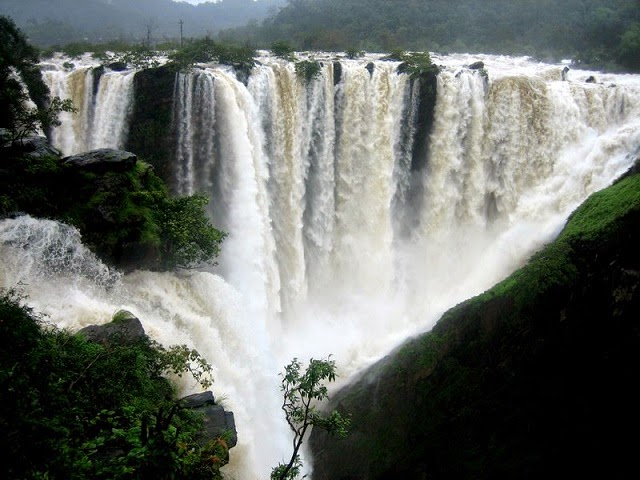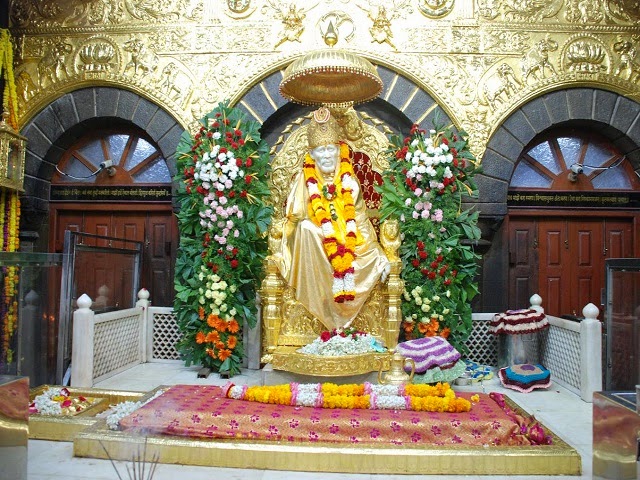One of the popular travel themes in India is the majestic forts in India several of whom have been inscribed by UNESCO as World Heritage Sites for their cultural significance and place they hold in India history and heritage. A land ruled by various Rajput warrior princes, Nizams, Sultans and emperors, there are a number of mighty impregnable forts in India to visit. These living legends are sprinkled across the length and breadth of the country.
But then again there are only so much time for you to visit these forts in a go. So in continuation of our earlier list of top 10 forts in India to visit, we bring to you the part II of the list to make it easier for you to pick and choose the fort you should travel to especially if you are looking for a cultural experience and historical perspective in India.
Bekal Fort, Kasargod
 |
| Bekal Fort in Kasargod, Kerala |
Wrought like a giant-key hole, Bekal Fort is one of the largest and best preserved forts in Kerala. Encompassed by a spectacular beach, this historical fort offers a panoramic view of the Arabian Sea from its massive towers.
Today, the Bekal Fort and its surroundings, which include backwaters, hill destinations and water sport facilities, is a popular shooting locale for film-makers.
There are several beliefs regarding the construction of Bekal Fort. It is also believed that the fort was built in 1650 AD by Sivappa Naik of the Ikkeri dynasty. There is another story which says that the fort was originally built by Kolathiri Rajas and later captured by Sivappa Naik.
Some important features of this fort include tank with its flight of steps, the tunnel opening towards the south and the magazine for keeping ammunition.
Taragarh Fort, Bundi
 |
| Taragarh Fort in Bundi, Rajasthan |
Bundi is one of the most unexplored cities in Rajasthan with a rich historical heritage. It is encompassed by the Aravalli Hills on three sides and is framed by a massive wall with four gateways.
The famous Taragarh Fort, also known as Star Fort, is one of the lesser known forts in India. Taragarh Fort was the home of a major princely state at the height of the Rajput glory days.
Built in 1354 with imposing stone structure, this fort is located on a steep hill and has massive walls and ramparts. It has been raised to a height of 500 meters from the top of a hill built by Rao Singh Bar. The fort welcomes travelers with a huge door.
Inside the fort, tourists can see the Bhim Burj, the largest platform and a huge water tank, cut into solid rock. There are three gateways to the fort, well-known as Lakshmi Pol, Gagudi ki Phatak and Phuta Darwaza.
Lohagarh Fort, Bharatpur
 |
| Lohagarh Fort in Bharatpur, Rajasthan |
Also known as the Iron Fort, the Lohagarh Fort was constructed in the 18th century in Bharatpur, Rajasthan. This invincible fort was built by Maharaja Suraj Mal. It is situated amidst calm and serene surroundings and encompassed by lush green vegetation and a man-made island.
The Lohagarh Fort was able to withstand the repeated attacks from the British forces led by Lord Lake in 1805 when they laid a siege for more than 6 weeks. After losing more than 3000 soldiers, the British forces had to retreat and strike a compromise with the Bharatpur rulers.
Tourist who wishes to visit the fort can commute by means of the local transport available. However, Bharatpur Bird Sanctuary is hogging all the limelight, and therefore; Lohagarh is often dubbed as the lesser visited forts in India.
Tiruchirapalli Rock Fort, Trichy
 |
| Rock Fort Temple in Trichy, Tamil Nadu |
Also known as Ucchi Pillayar Koil, Tiruchirapalli Rock Fort is a combination of two famous 7th century Hindu temples in Trichy, Tamil Nadu, one dedicated to Lord Ganesha and the other dedicated to Lord Shiva.
The rock is said to be around 3,800 million years, which makes it as older than the Himalayas. The biggest part of the work to carve out the rock and associated temple construction took 300 men 11 years of effort.
The fort played an important part during the Carnatic wars and immensely contributed to the foundations of the British Empire in India. The Rock Fort is believed to be 230 crore years old and materials such as quartz & feldspar are found in rock formation.
Bandhavgarh Fort, Bandhavgarh
 |
| Bandhavgarh Fort in Bandhavgarh |
Located in the Umaria district of Madhya Pradesh, Bandhavgarh Fort is situated atop of the Bandhavgarh hill. The road to the complex leads through Shesh Shaiya a fairy tale spectacle of miniature waterfalls, vertically hanging ferns and an ancient pool. In order to visit Bandhavgarh Fort, you require a prior permission from the authority.
There is a mythological history that Lord Rama, while returning to Ayodhya after defeating the demon king Ravana, built a fort and ordered Lakshmana to keep an eye over Lanka. The fort has a complex history but today it is popular as the land of the tigers.
They can be seen on some occasion during the climb up. This fort is an excellent breeding ground for all animals due to its isolation from human commotion.
Chunar Fort, Uttar Pradesh
 |
| Chunar Fort in Uttar Pradesh |
Nestled on the banks of River Ganges, Chunar Fort is located at a height of 80 to 175 feet from the ground level. It is the prime attraction of Chunar town. The fort stands on a rock at an elevation of 280 feet above sea level.
The fort was established by the king of Ujjain, Maharaja Vikramaditya to commemorate the stay of his brother Raja Bhartihari who had taken his Samadhi in a live stage.
The fort has witnessed the rule of three Mughal Emperors-Babur, Humayun and Akbar before it was passed to the Nawabs of Awadh in the 18th century. One can also find a stone umbrella inside the fort, which was built by King Sahadeo to commemorate his victory over 52 rulers.
Bidar Fort, Karnataka
 |
| Bidar Fort in Karnataka |
Situated in Bidar district of Karnataka, Bidar Fort is one of the most popular tourist spots in the state. The structure of this fort exhibits the Persian style of architecture. Several mosques, gardens, arches and palaces were built inside and outside the fort complex.
As per documented facts, the Bidar Fort was built in the 15th century. It came into prominence with the Sultanate regime. The main façade of the Bidar Fort was built by Bahamani Sultan Ahmed Shah Wali in 1429 AD.
Later on, renovations and modifications were carried out by Barid Shahi Sultans. It was lastly conquered by the Mughal King Aurangzeb.
The layout of the fort is in quadrangular shape. Most of the structures of the fort have got ruined with the passage of time, yet the remains are very well conserved.
Some of the popular remains in the fort include Solah Khamba Mosque, Gagan Mahal, Rangin Mahal and Zenana Palace among others. Other highlights of this fort include Lal Bagh, Watch Tower, Takhat Mahal and Deewan-e-Aam.
Tughlaqabad Fort, Delhi
 |
| Tughlaqabad Fort in Delhi |
Perched atop of a rocky hill, Tughlaqabad Fort comprises 1/3rd of New Delhi. The ramparts of this fort, now in ruins, are from 10 meter to 15 meter high with bastions and gateways. A visit to this hill fort in Delhi could amount to a memorable day trip with the legends, stories and curse that have been attributed with this place.
It was built to serve a dual purpose, one of providing a defensive structure to the ruler and second to serve as his imposing capital. Although the heritage of New Delhi is quite touristy, you may find a few people visiting Tughlaqabad Fort, and therefore it is often considered as lesser known forts in India.
The fort was built in the early part of the 14th century by Ghias-ud-din Tughlaq. Before Tughlaq had acquired that title, he came to be known as Ghazi Malik and served Sultan Mubarak Khilji.
The idea of constructing this fort came to Ghias ud Din Tughlaq during a conversation with Khilji Tughlaq suggested that his master should build himself a fortress here to which Khilji replied that perhaps one day when Tughlaq becomes Sultan, he should build the fortress himself.
The fort was built with the idea to keep Mongol invaders at bay. Besides, Tughlaq also built a road that came to be known as the GT Road. Today along with the tomb of Ghiyath-ud-Din Tughlaq is one of the top places to visit in Delhi especially if you are looking for a cultural and heritage experience.
The entrance to Tughlaqabad Fort is chargeable. For Adults who are Indian citizens, the cost is Rs. 5. For foreign visitors, the cost of the ticket is around Rs. 100. Entry for children up to 15 years of age is free. You could also take Delhi Metro's Violet Line and alight at Tughlaqabad Metro Station to reach this fort.
[ Read more about Tughlaqabad Fort ]
Daulatabad Fort, Devagiri
 |
| Daulatabad Fort in Devagi |
Daulatabad, the fort city in Maharashtra, is located at a distance of 16 kilometers northwest of Aurangabad. It was earlier known as Devgiri. The hill fortress stands on a conical hill, at a height of 200 meters.
Initially it was built as Yadav stronghold, later; it was passed through the hands of several dynasties in the Deccan. The name ‘Daulatabad’ was given by Muhammad Tughlaq, Sultan of Delhi.
When Muhammad Tughlaq ascended the throne of Delhi, he was so besotted by the fort that he decided to move his court and capital there, renaming it Daulatabad (the City of Fortune).
It is one of the world’s best preserved forts, without ever being distorted. This fort is an example of architectural mastery even in those times.
[ Read more about Daulatabad Fort ]
The Hill Fort Kesroli, Alwar
 |
| The Hill Fort in Kesroli in Alwar |
The Hill Fort Kesroli is a 14th century Fort located in Alwar, Rajasthan in India. This heritage hotel belongs to the Neemrana Hotels Group. It was built six centuries ago by the Yaduvanshi Rajputs. The seven turreted Forts have changed hands many a times.
It has been conquered by the Mughals and the Jats. The part of Rajasthan where the fort is situated is a wonderful place for the ornithologists and zoologist amateur who wants to discover the wildlife in India.
[Interested in forts and palaces tours, check out these packages at Indianholiday.com]
Related Posts:


























